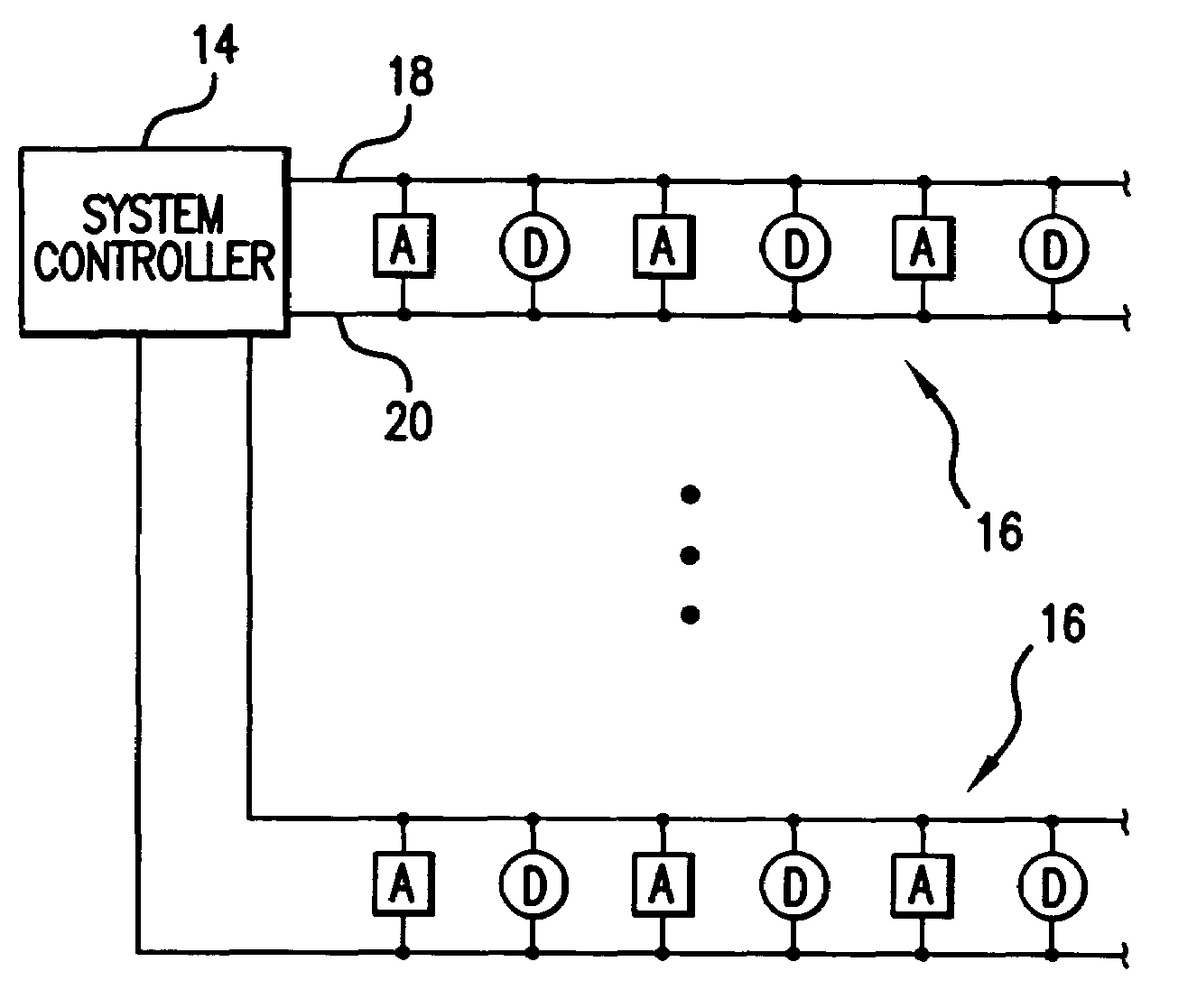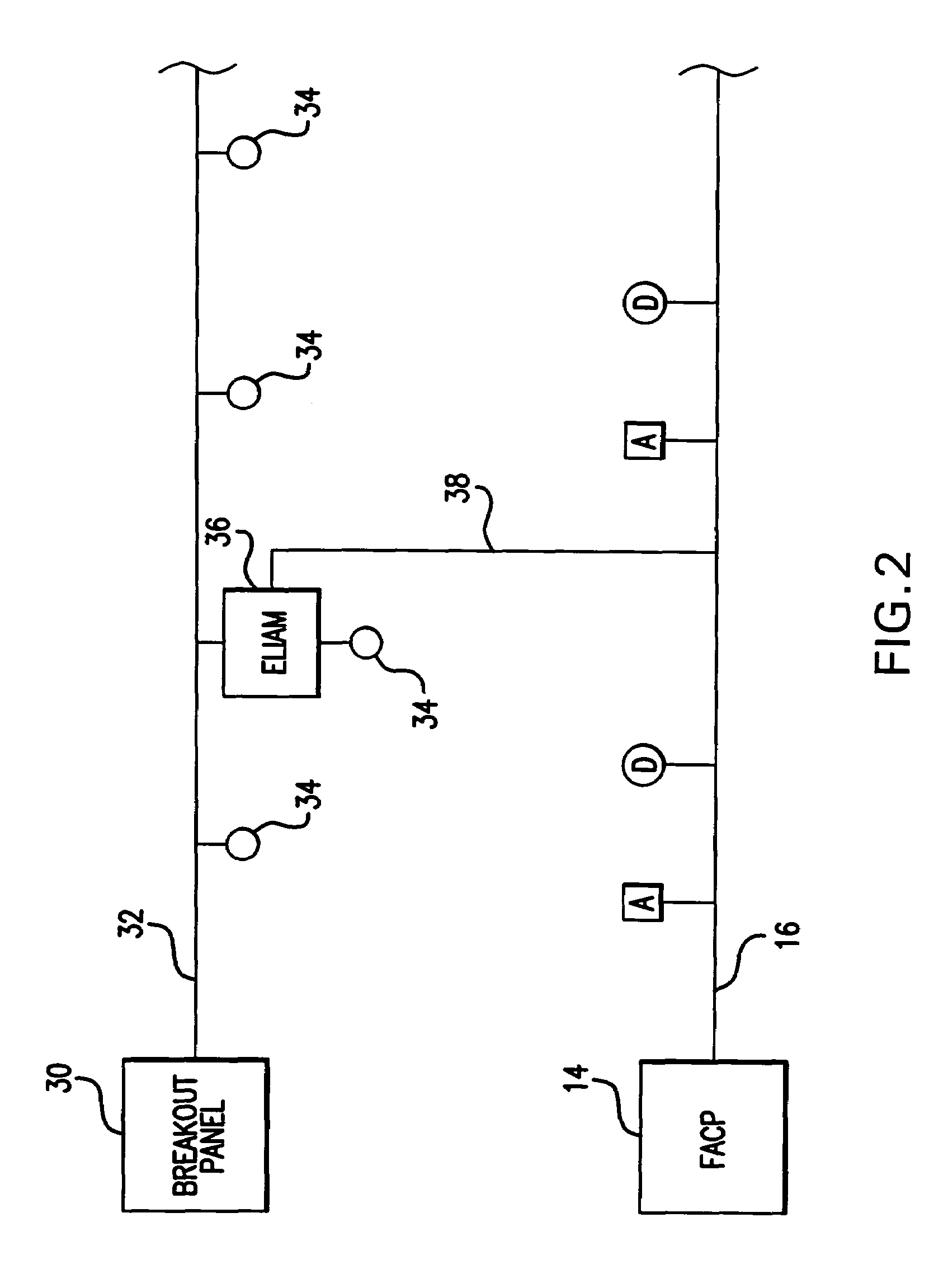Emergency lighting system with improved monitoring
a technology of emergency lighting and monitoring, applied in the direction of fire alarms, audible advertising, instruments, etc., can solve the problems of insufficient representation, insufficient monitoring, and significant labor, and achieve the effect of improving monitoring and reducing service costs
- Summary
- Abstract
- Description
- Claims
- Application Information
AI Technical Summary
Benefits of technology
Problems solved by technology
Method used
Image
Examples
first embodiment
[0034]FIG. 3A is a block diagram illustrating the present invention ELIAM. Power is received through power line 32 and is normally routed to power lamp 34. In the event of an AC power loss, a controller 42 causes the lamp 34 to be powered from the backup battery 40.
[0035]A network interface 44 connects the unit to the fire alarm network 38. Upon receiving a command via the network interface 44 from the system controller 14 (FIG. 2), the ELIAM controller 42 disconnects the lamp 34 from the power line 32 and instead causes the lamp 34 to be powered from the backup battery 40.
[0036]Thus, upon a command to test the backup battery 40, the battery 40 is discharged through the lamp 34. The battery voltage or current draw may be monitored by the controller 42 and the resulting battery or lamp (no current would imply a faulty lamp) information can then be transmitted to the system controller 14.
[0037]Alternatively, rather than discharging the battery 40 through the lamp 34, the battery 40 co...
PUM
 Login to View More
Login to View More Abstract
Description
Claims
Application Information
 Login to View More
Login to View More - R&D
- Intellectual Property
- Life Sciences
- Materials
- Tech Scout
- Unparalleled Data Quality
- Higher Quality Content
- 60% Fewer Hallucinations
Browse by: Latest US Patents, China's latest patents, Technical Efficacy Thesaurus, Application Domain, Technology Topic, Popular Technical Reports.
© 2025 PatSnap. All rights reserved.Legal|Privacy policy|Modern Slavery Act Transparency Statement|Sitemap|About US| Contact US: help@patsnap.com



